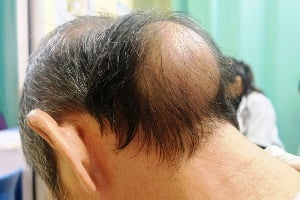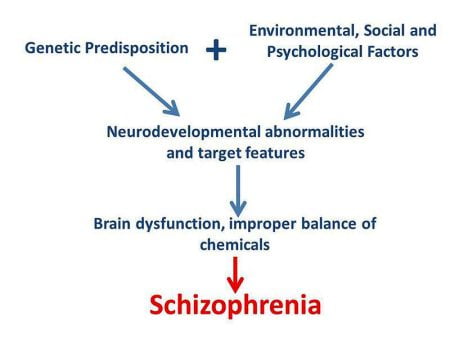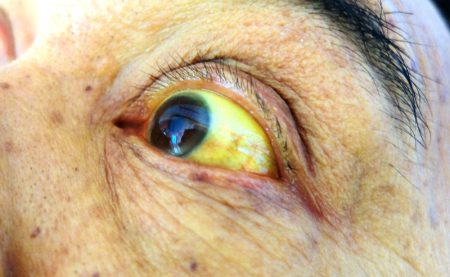An Overview of Cushing’s Syndrome
- Updated on: Jul 10, 2024
- 7 min Read
- Published on Aug 1, 2019


What is Cushing’s Syndrome?
Cushing’s syndrome is a hormonal condition caused due to excessive levels of cortisol in the body. It can have severe and widespread effects on the body. Cushing ’s syndrome often results from using medications that lead to high levels of cortisol in the body. But there may be some other causes like a benign or cancerous tumor. Most people confuse Cushing’s syndrome with Cushing’s disease, although the two are related but they are not the same.
Cushing syndrome is a group of signs and symptoms caused due to hypercortisolism (abnormal levels of cortisol). Cortisol is a steroid hormone produced by adrenal glands. It breaks down proteins and fats and also stimulates liver glucose production. Cortisol helps the body in regulating blood pressure, to control inflammation and also to react against physical and emotional stress.
Cushing’s disease has been found to be one of the causes of Cushing’s syndrome. It is a rare condition caused due to a pituitary adenoma (a non-cancerous tumor in the pituitary gland) which releases high levels of a hormone known as adrenocorticotropic hormone (ACTH). Excessive levels of ACTH trigger high levels of cortisol and therefore result in a variety of symptoms.
Signs and Symptoms of Cushing’s Syndrome
Signs and symptoms of Cushing’s syndrome vary among people. People who have excessive levels of cortisol from a very long time are likely to have clear signs of the disorder, including:
- Weight gain
- Thin arms and legs
- A round face
- Increased fat around the base of the neck
- A fatty hump between the shoulders
- Easy bruising
- Wide purple stretch marks on the body mainly abdomen, breasts, hips, and under the arms
- Severe fatigue
- Muscle weakness
- Depression, anxiety and irritability
- Loss of emotional control
- Cognitive difficulties
- New or worsened high blood pressure
- Headache
- Increased pigmentation of the skin
- Bone loss, leading to fractures over time
- impaired growth (In children)
Cushing’s syndrome is usually difficult to detect because not everyone with this syndrome experience these symptoms. Sometimes, men, women and children with Cushing’s syndrome show certain specific symptoms. Men may experience decreased libido and fertility and also erectile dysfunction. Children are obese and grow slowly as compared to other normal children. Women may experience excessive hair growth on their face (hirsutism), neck, chest, abdomen, and thighs and also irregular or absent menstrual periods.
Causes of Cushing’s Syndrome
The most common cause of Cushing’s syndrome is the prolonged and high-dose use of the cortisol-like glucocorticoids also known as steroids or prednisone. These medicines are generally used to treat some medical conditions like asthma, rheumatoid arthritis, joint pain, and lupus. Besides, glucocorticoids are used to suppress the immune system after an organ transplant to keep the body from rejecting the new organ. Mostly, people develop Cushing’s syndrome because their bodies make excess cortisol. There are several types of tumors that can cause the body to make excess cortisol such as pituitary tumors, ectopic ACTH-producing tumors, and adrenal tumors.
Pituitary Tumors
Pituitary gland is a pea size gland present at the base of the brain. Normally, pituitary makes adrenocorticotropic hormone (ACTH) and other hormones and ACTH tell the adrenal glands to make cortisol. Some pituitary tumors or pituitary adenomas result in excessive production of ACTH which in turn causes the adrenals to make too much cortisol. It has been found that pituitary tumors that make excess ACTH cause 8 out of 10 cases of Cushing’s syndrome and such type of Cushing’s syndrome is called Cushing’s disease.
Ectopic ACTH-Producing Tumors
There are some tumors that develop outside the pituitary gland known as ectopic ACTH-producing tumors. These tumors can also produce ACTH and such a condition is called ectopic ACTH syndrome. These tumors mostly occur in the lungs. Besides, they can also occur in the pancreas, thyroid, and thymus. Ectopic tumors may be cancerous.
Adrenal Tumors
Sometimes, there is a tumor on the adrenal gland itself which makes excessive cortisol. Adrenal tumors are mostly benign but sometimes they can be cancerous.
Familial Cushing Syndrome
One of the possible causes of Cushing’s syndrome is familial Cushing syndrome. Cushing syndrome is not usually inherited, but it is possible to have an inherited tendency to develop tumors of the endocrine glands.
Types of Cushing’s Syndrome
Cushing’s syndrome is of two main types – exogenous and endogenous
Exogenous Cushing’s syndrome
Exogenous Cushing’s syndrome occurs due to an external cause i.e. when the cause is something outside the body’s function like excessive use of corticosteroid drugs which are similar to that of cortisol. These corticosteroid drugs therefore increase the cortisol levels in the body. Some of these drugs include prednisone, dexamethasone, and methylprednisolone. People with diseases like rheumatoid arthritis, lupus, asthma, are often given these drugs. Besides, recipients of an organ transplant may also need high doses of these drugs. In addition, injectable corticosteroids, a treatment for joint pain, back pain and bursitis, can also lead to Cushing’s syndrome.
According to The National Institute of Diabetes and Digestive and Kidney Diseases (NIDDK), approximately 10 million people in the United States use glucocorticoid medications each year, but it is still unclear how many develop the symptoms of Cushing’s syndrome.
Endogenous Cushing’s syndrome
Endogenous Cushing’s syndrome occurs due to an internal cause i.e. when the cause comes from inside the body like excessive production of cortisol by the adrenal glands. Cushing’s disease is an example of this type of syndrome. Besides, similar symptoms can also result from adrenal gland tumors and benign or malignant tumor in the pancreas, thyroid, thymus gland, or lung which ultimately increases the levels of cortisol in the body.
Complications of Cushing’s Syndrome
According to the National Institute of Diabetes and Digestive and Kidney Diseases (NIDDK), problems and complications associated with Cushing’s syndrome are:
- High blood pressure
- Formation of blood clots
- Stroke and heart attack
- Unhealthy cholesterol levels
- Types 2 diabetes and insulin resistance
- Excessive thirst
- Frequent urination
- Profuse sweating
- Increased risk of blood infections and other unusual infections
- Osteoporosis
- Kidney stones
- Loss of muscle mass and strength
- Changes in mental function
- Obesity and a slow growth rate in children
Diagnosis of Cushing’s Syndrome
There are many conditions which have similar symptoms to that of Cushing’s syndrome which makes it difficult to diagnose. Symptoms like fatigue and weight gain have many other different causes. Mostly, Cushing’s syndrome is mistaken for other conditions having similar signs and symptoms like polycystic ovary syndrome or metabolic syndrome. It is therefore important to rule out other conditions first. Usually, the diagnosis is based on a patient’s medical history, a physical exam, and lab tests. Doctors often ask the patients if they are taking glucocorticoids or have had injections before suggesting some lab tests.
Generally, doctors use saliva, urine, or blood tests to diagnose Cushing’s syndrome but few doctors run a follow-up test to find out if excess cortisol is caused by Cushing’s syndrome or has a different cause. Although, there is no specific test for diagnosing Cushing’s syndrome but following tests have been found to be useful.
24-Hour Urinary Free-Cortisol Test
In this test, a patient is supposed to collect urine over a 24-hour period. This urine is then tested for cortisol levels. Higher cortisol levels than normal suggest Cushing’s syndrome.
Late-Night Salivary Cortisol Test
This test is used to measures the amount of cortisol in saliva of patients in the late evening. Normally, cortisol production decreases just after we fall asleep but in Cushing’s syndrome, the cortisol levels do not drop. Therefore the late night salivary cortisol test is useful in diagnosing the Cushing’s syndrome.
Low-Dose Dexamethasone Suppression Test (LDDST)
In this test, patients are given a low dose of dexamethasone (a type of glucocorticoid) usually around 11:00 p.m and then a health care professional will draw their blood samples in the following morning, usually around 8 a.m. There is another method of performing LDDST test, in which patients are supposed to take dexamethasone every 6 hours for 48 hours and then the blood is drawn 6 hours after the last dose. Normally, cortisol levels in the blood decrease after taking dexamethasone, however if cortisol levels do not fall, it may suggest Cushing’s syndrome.
Dexamethasone–CRH Test
If there are excess levels of cortisol in the body, the doctor may suggest a follow up test called the dexamethasone–corticotropin-releasing hormone (dexamethasone-CRH) test. This test helps in determining whether excess cortisol is caused by Cushing’s syndrome or by something else. There are many people whose cortisol levels keep on fluctuating but they do not develop the long-term health effects of Cushing’s syndrome. Such a condition is called pseudo-Cushing’s syndrome. It is usually found in people who have depression or anxiety, drink too much alcohol, have diabetes with blood glucose levels that are often too high, or have obesity.
In this test, patients are given a shot of CRH and oral dexamethasone. If they have pseudo-Cushing’s syndrome, the dexamethasone will decrease ACTH and cortisol levels and keep them from rising. Excessive cortisol levels just before the CRH shot during this test suggest Cushing’s syndrome.
Treatment of Cushing’s Syndrome
The treatment options for Cushing’s syndrome are designed to lower the excessive levels of cortisol in the body. The best treatment depends on the cause of the syndrome. Some of the treatment options include:
Reducing Corticosteroid Use
If the Cushing’s syndrome is caused due to prolonged use of corticosteroid medications, your doctor may be able to control your signs and symptoms by reducing the dosage of the drug over a period of time, while still effectively managing your asthma, arthritis or other conditions. This is usually done with the help of some noncorticosteroid drugs, which helps to eliminate the use of corticosteroids altogether.
Surgery
Surgery is an option if the cause of Cushing’s syndrome is a tumor. The tumor is surgically removed typically by a neurosurgeon, who may perform the procedure through your nose. However, if a tumor is present in the adrenal glands, lungs or pancreas, the surgeon can remove it through a standard operation or in some cases by using minimally invasive surgical techniques, with smaller incisions. After surgical removal of tumor, the patients are often given some cortisol replacement medications so as to provide their body with the correct amount of cortisol.
Radiation Therapy
Radiation therapy is usually performed in patients who aren’t suitable candidates for surgery. If the surgeon is unable to completely remove a pituitary tumor, he or she will usually prescribe radiation therapy to be used in conjunction with the operation. Radiation can be given in small doses for six weeks, or with a technique called stereotactic radiosurgery. In the latter procedure, a large, one-time dose of radiation is delivered to the tumor, and the radiation exposure to surrounding tissues is decreased.
Medications
Medications are given to patients for controlling the excess cortisol production especially when surgery and radiation become unsuccessful. Doctors may sometimes recommend drug therapy before surgery to improve signs and symptoms and minimize surgical risk. Some of the medications used to control excessive production of cortisol at the adrenal gland include ketoconazole, mitotane (Lysodren) and metyrapone (Metopirone). Mifepristone (Korlym). Mifeprex) is a drug which is approved for people with Cushing syndrome who have type 2 diabetes or glucose intolerance. It does not decrease cortisol production, but it blocks the effect of cortisol on tissues. These medications are useful in the treatment of Cushing’s syndrome but they have some side effects like fatigue, nausea, vomiting, headaches, muscle aches, high blood pressure, low potassium and swelling. Some have even more-serious side effects, such as neurological side effects and liver toxicity.
A new medicine pasireotide (Signifor) has been found useful for Cushing’s syndrome. It works by reducing ACTH production from a pituitary tumor. This medicine is given as an injection twice daily. It’s often recommended if pituitary surgery is unsuccessful or cannot be done.
Sometimes, all these treatments are ineffective and may require surgical removal of your adrenal glands (bilateral adrenalectomy). This procedure can cure excess production of cortisol, but often requires lifelong replacement medications.












